Fabricating Technology
In the sheet metal fabrication industry, there are two main technologies used: punch presses and laser cutters. Our customers frequently ask us which is the preferred method between the two. The answer, of course, varies from situation to situation. Thickness, number of holes, contours, and formed areas all dictate which technology is more applicable. This article breaks down the main differences between punch presses and laser cutters.
Punch
Punching shears the metal between the upper tool (punch) and lower tool (die). Notably, punches can make formed areas such as louvers and extruded holes. Additionally, they can mechanically stamp part numbers or logos. The sheet metal typically moves in the ‘X’ and ‘Y’ axis while the punch head remains stationary. Consequently, parts must be tabbed into parent sheet or removed. Punches can either be manual or CNC.
Advantages
Punches offer a lower operating cost than laser cutters. They also perform faster on hole-intensive parts and are capable of tapping holes. Importantly, they can punch and form sequentially on one machine.
Disadvantages
When punching, the parent sheet must remain clamped. Punches also produce a lot of noise, which can be potentially dangerous for the user. Because punches require greater clearance between parts, there is increased waste when compared to a laser cutter. Additionally, a greater set-up cost comes with using a punch. Finally, the maximum thickness that is punchable is ¼”.
Axis owns a TRUMPF TruPunch 5000 punch press. Check out our article on our Punch Machine Capabilities.

Laser
Laser cutters use light energy focused into a laser beam supplemented by cutting gas in order to cut sheet metal. They can process either thick or thin material. Unlike punches, the sheet remains stationary while the laser head moves in the ‘X’, ‘Y’, and ‘Z’ axes. Lasers can also be used to etch part numbers and logos.
Advantages
Laser cutters can process metal without any physical contact or the use of force. Additionally, nearly any contour can be created without a tool change, in contrast to punching and nibbling. Precise slitting is possible, even at high speeds. High processing speed results in a minimal heat affected zone, leading to minimal workpiece distortion, which is, for all intents and purposes, negligible in sheet metal processing. Cut surfaces have very little roughness; the thinner the sheet, the smoother the edge. There is also a very low setup cost. Unlike punching, tabbing into the parent sheet is only necessary with small parts. Finally, the maximum material thickness that is laserable is 1”.
Disadvantages
The only major disadvantage of laser cutters is its lack of ability to form parts. A secondary operation to form parts is necessary.
Axis owns two TRUMPF lasers. An L3030-5000 Watt CO2 laser and 3030- 4000 Watt Fiber laser. Check out our article on our Laser Cutting Capabilities.
Which one to choose?
Operating Costs
- Production speed: punch makes holes faster than lasers. The more holes a piece has, the more sense a punch makes.
- Level of intricacy: laser is much more ideal for creating shapes with a number of small features
- Batch sizes: punch is suited for larger batches due to the long set up time. Lasers have shorter set-up times which makes them more suited for smaller batches than punches.
Analyze Parts
- Size: thickness and size of machine and material dictates the choice
- Shape: Punches-rectangles, lasers-irregular shapes
- Forming capabilities: louvers or countersinks ideal for punching.
- Tapping on punch can eliminate secondary operation.
Right Tooling
- Punches: flexibility is key and varies from machine to machine
- Lasers: flexibility is built in
Further reading: MIG vs. TIG Welding

